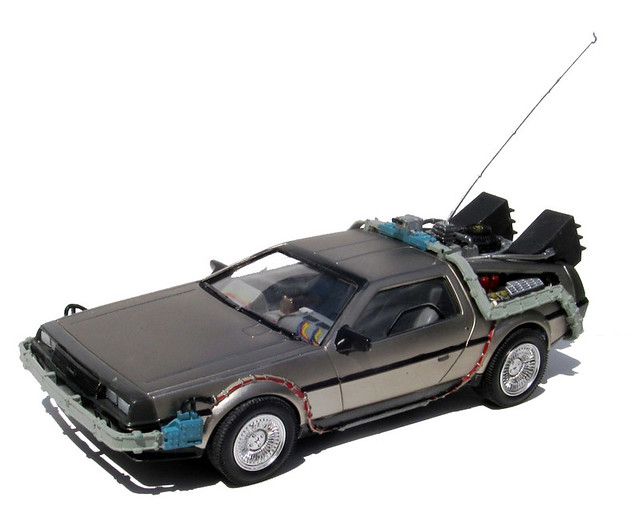1947 Chevrolet Fleetmaster Aerosedan 1:25 Scale Galaxie Ltd Model Kit #13012 Review
Right On Replicas, LLC Step-by-Step Review 20150924*
1947 Chevrolet Fleetmaster Aerosedan 1:25 Scale Galaxie Ltd Model Kit #13012 Review

Review and Photos by Alan Mann 
The Chevrolet Fleetmaster was produced by Chevrolet for the 1946 to 1948 model years. The Fleetmaster series included the Fleetline sub-series which was offered only in 2-door and 4-door “fastback” body styles. The Series DK Fleetmaster was introduced as the top trim level model in the 1946 Chevrolet range, along with the lower level Series DJ Chevrolet Stylemaster. The Fleetmaster, which replaced the “prewar” Chevrolet Special Deluxe, was powered by a 216.5 cu in (3.5 L) Straight-six engine with a 3 speed manual transmission. It was offered in 2-door Town Sedan, 4-door Sport Sedan, 2-door Sports Coupe, 2-door Convertible and 4-door Station Wagon models. A Fleetline sub-series was available as the 2-door Aero Sedan and 4-door Sport Master Sedan, both of which featured “fastback” styling and additional triple moldings on all fenders. The 1947 Series 2100 EK Fleetmaster was little changed from its predecessor, the most notable visual difference being a new radiator grille with a more horizontal theme.
Â
For the Modeler: This review covers the 1/25 Scale GALAXIE LIMITED 1947 Chevrolet Fleetmaster Aerosedan. This is Kit #13012 in the current catalog and is a 2015 New Release. I did find in researching this kit it was one of a few different releases of the kit.  Galaxie has re-boxed this with additional parts and created multiple kits from the same molds. This is very common in the model industry and so this is a New Release version of a similar kit. Galaxie rates this as a Skill Level 3 recommended for experienced modelers. In the box you get around 165 parts molded in White, Chrome, Clear, Clear Red and Vinyl tires. This is a true 3-in-1 customizing kit that can be built as stock, custom or racing versions. It has authentic looking black vinyl tires with press-in wide whitewall inserts. Trim parts are included to build 1946, 1947 or 1948 model years. Decals are from Scale Master and include Country Club Woodside trim. You have the choice of stock or lowered suspension heights. The model
Galaxie has re-boxed this with additional parts and created multiple kits from the same molds. This is very common in the model industry and so this is a New Release version of a similar kit. Galaxie rates this as a Skill Level 3 recommended for experienced modelers. In the box you get around 165 parts molded in White, Chrome, Clear, Clear Red and Vinyl tires. This is a true 3-in-1 customizing kit that can be built as stock, custom or racing versions. It has authentic looking black vinyl tires with press-in wide whitewall inserts. Trim parts are included to build 1946, 1947 or 1948 model years. Decals are from Scale Master and include Country Club Woodside trim. You have the choice of stock or lowered suspension heights. The model  includes a detailed Chevy “Stovebolt” six-cylinder engine that can be built stock or with optional speed equipment including three Stromberg 97 carburetors, Edelbrock racing intake manifold and chrome Wayne valve and tappet covers. It has a fully detailed interior with separate door handles, window cranks, armrests, pedals, finely engraved multi-piece instrument panel and seats. Some of the custom options are a windshield visor and fender skirts. The instructions are well laid out and easy to read, they include written instructions with the construction diagrams. On the back page you get customizing and specialty tips to create a better build. Overall dimensions are: Length 8â€, Width: 3â€, Height: 2-1/5â€.
includes a detailed Chevy “Stovebolt” six-cylinder engine that can be built stock or with optional speed equipment including three Stromberg 97 carburetors, Edelbrock racing intake manifold and chrome Wayne valve and tappet covers. It has a fully detailed interior with separate door handles, window cranks, armrests, pedals, finely engraved multi-piece instrument panel and seats. Some of the custom options are a windshield visor and fender skirts. The instructions are well laid out and easy to read, they include written instructions with the construction diagrams. On the back page you get customizing and specialty tips to create a better build. Overall dimensions are: Length 8â€, Width: 3â€, Height: 2-1/5â€.
Â
Covered in this Review: If you want to perfect your build; basic construction; preparing parts for a better finish; alternate assembly sequence suggestions for fit and ease of finishing; complete paint and adhesive selections and applications; test fitting; engine construction and detailing; how to make the “woody†look, detailed suspension construction and detailing; making realistic tires; interior detailing; stock/race decals are discussed; making custom license plates; mounting optional body parts; aligning the front clip; constructing and detailing the chassis; installing the driveline; engine options discussed, optional engine wiring methods; making realistic coil springs; identifying and repairing mold seams; overall race/stock version considerations; when NOT to use glue; adding engine bay details; how to detail the interior; professional engine bay touches; making a realistic looking dashboard; using floor polish for crystal clear “glassâ€; a method for damage-free chassis installation; how to use Bare Metal Foil for outstanding trim; using setting solution for decal application and that “painted on†look; using “clear†glue for windows; mold seam identification and repair; detailing the instrument panel; decal preparation and application; are all fully examined in this extensive 20 page, full-color Step-by-Step review in PDF format.
Click the Buy Now link below to purchase the full Step-by-Step review for $3.95 USD.
Important – You MUST click on the “Return to Right on Replicas, LLC” link after you’ve made your purchase to download your review!
Â
Right On Replicas, LLC ©2015 All rights reserved. *All registered trademarks are the property of their respective brands. Follow the manufacturer’s safety recommendations for any product mentioned here.




